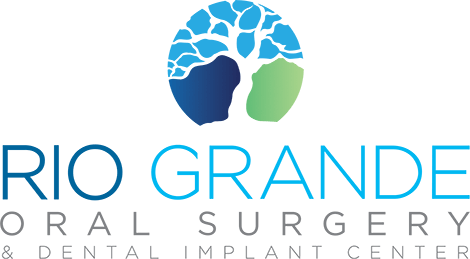When dental implants are the best solution for replacing missing teeth, the health and structure of your jaw are critical for success. For some patients, particularly when replacing upper back teeth, there isn't enough bone height to securely place an implant. This is where a sinus lift, also known as sinus augmentation, becomes a necessary and beneficial procedure.
If you've been told you need a sinus lift, one of your first questions is likely about the discomfort involved. It's natural to feel apprehensive about any surgical procedure. At Rio Grande Oral Surgery & Dental Implant Center, we believe in empowering our patients with clear, honest information. We want you to feel confident and prepared for your treatment.
This guide will walk you through what to expect during and after a sinus lift procedure. We will explain how we manage discomfort, detail the recovery process, and provide practical tips to help you heal smoothly.
What Is a Sinus Lift and Why Is It Needed?
Your maxillary sinuses are air-filled spaces located behind your cheekbones, just above your upper back teeth. The roots of these upper molars often extend close to, or even into, the floor of the sinus. When one of these teeth is lost, the bone that once supported it begins to shrink or resorb over time. This process, combined with the natural anatomy of the sinus, can leave insufficient bone to anchor a dental implant.
A sinus lift is a surgical procedure that adds bone to your upper jaw in the area of your molars and premolars. It involves gently lifting the sinus membrane and placing a bone graft into the space created. This graft material serves as a scaffold, encouraging your body to grow new, strong bone. After a period of healing, this newly formed bone will provide a solid foundation for dental implants.
You may need a sinus lift if:
- You are missing more than one tooth in your upper back jaw.
- You have significant bone loss due to periodontal (gum) disease.
- You have been missing an upper back tooth for a long time, allowing bone to resorb.
- The anatomy of your sinus is naturally large or close to the upper jaw, leaving little room for an implant.
By performing a sinus lift in Albuquerque, our oral surgeon, Dr. Drew Steel, can create the optimal conditions for successful, long-lasting dental implants.
Managing Discomfort During the Sinus Lift Procedure
The most common concern we hear from patients is about pain during the surgery itself. We want to reassure you that a sinus lift procedure is performed with effective anesthesia to ensure you are comfortable and do not feel any pain.
Anesthesia and Sedation Options
At Rio Grande Oral Surgery, we prioritize your comfort and safety. Before your procedure, we will discuss the best anesthesia option for you.
- Local Anesthesia: This is the most common choice for a sinus lift. We will numb the surgical area completely, so you will be awake but feel no pain. You may feel some pressure, but not sharpness or discomfort.
- IV Sedation: For patients who experience anxiety or prefer to be more relaxed, we offer IV sedation. This will put you in a sleep-like state, and you will have little to no memory of the procedure afterward. Your vital signs are closely monitored throughout the surgery by our trained team.
Our goal is to create a calm and pain-free experience. Dr. Steel and our clinical staff are highly experienced in administering anesthesia and ensuring patients feel safe and at ease from start to finish.
What to Expect During Recovery: The First Few Days
After the anesthesia wears off, you can expect to feel some discomfort, swelling, and possibly minor bleeding. This is a normal part of your body's healing response. The level of discomfort is often described as similar to that of a tooth extraction and is typically manageable with proper care.
The First 24 Hours
- Pain Management: We will provide you with a prescription for pain medication. It is important to take the first dose before the local anesthetic fully wears off. For many patients, over-the-counter pain relievers like ibuprofen or naproxen are sufficient after the first day.
- Bleeding: Some minor oozing or bleeding from the surgical site is normal. You can bite down gently on a piece of gauze for 30-60 minutes to control it. You may also experience some light bleeding from your nose for a few days. Do not blow your nose forcefully.
- Swelling: Swelling is your body's natural reaction to surgery and usually peaks around 48-72 hours after the procedure. To minimize it, apply an ice pack to your cheek over the surgical area. Use it for 20 minutes on, then 20 minutes off, for the first 24-48 hours.
- Diet: Stick to a liquid or soft-food diet. Good options include smoothies, yogurt, pudding, applesauce, and lukewarm soups. Avoid hot foods and drinks, as they can increase bleeding. Do not use a straw, as the suction can dislodge the blood clot essential for healing.
Days 2-3
- Discomfort: Pain should begin to subside, but some soreness is still expected. Continue taking your prescribed or over-the-counter pain relievers as needed.
- Swelling and Bruising: Swelling will likely be at its peak during this time. You may also notice some bruising on your cheek, which is normal. After 48 hours, you can switch from ice packs to a warm, moist compress to help reduce swelling and improve circulation.
- Oral Hygiene: It is crucial to keep your mouth clean. You can begin gently rinsing with a prescribed antimicrobial mouthwash or a warm saltwater solution (1/2 teaspoon of salt in a cup of warm water) after meals. Avoid brushing the surgical area directly for the first few days.
Tips for a Smooth and Successful Sinus Lift Recovery
Your actions in the weeks following your sinus lift are vital for proper healing and the success of the bone graft. Following these guidelines will help minimize complications and ensure a comfortable recovery.
Do's and Don'ts for the First Two Weeks
Do:
- Rest: Get plenty of rest and avoid strenuous activity for at least the first week. Exercise can increase blood pressure and lead to bleeding and swelling.
- Keep Your Head Elevated: When sleeping or resting, use an extra pillow to keep your head elevated above your heart. This helps reduce swelling.
- Eat Soft Foods: Gradually introduce more solid foods as you feel comfortable, but continue to avoid hard, crunchy, or chewy items that could disturb the surgical site.
- Take Medications as Directed: Finish your full course of antibiotics to prevent infection and use pain medication as needed for comfort.
- Sneeze With Your Mouth Open: This may sound strange, but it is very important. Sneezing creates pressure in your sinuses. Sneezing with your mouth open directs that pressure out of your mouth instead of toward the delicate surgical site.
Don't:
- Do Not Blow Your Nose: For at least two weeks, avoid blowing your nose. If you need to clear your nose, gently dab it with a tissue.
- Do Not Use a Straw: The suction created by using a straw can dislodge the blood clot or damage the graft.
- Do Not Smoke or Use Tobacco: Smoking severely impairs your body's ability to heal. It constricts blood vessels, reduces oxygen flow to the tissues, and significantly increases the risk of infection and graft failure.
- Do Not Poke the Surgical Site: Avoid touching the area with your tongue or fingers.
- Do Not Engage in Activities That Create Pressure Changes: Avoid flying, scuba diving, or playing wind instruments until your surgeon clears you.
Long-Term Healing and What's Next
The initial recovery from the sinus lift surgery takes about one to two weeks. However, the bone graft itself needs several months to mature and fuse with your natural bone. This healing process, called osseointegration, typically takes anywhere from four to nine months.
During this time, we will schedule follow-up appointments to monitor your healing with X-rays. Once Dr. Steel confirms that the graft has successfully created a solid foundation of new bone, you will be ready for the next step: dental implant placement.
Your Partners in Oral Health
At Rio Grande Oral Surgery & Dental Implant Center, we understand that the prospect of oral surgery can be intimidating. Our entire team is dedicated to providing you with compassionate, expert care in a comfortable environment. We take the time to answer all your questions and ensure you are fully informed about every aspect of your treatment plan. If you have been told you need a sinus lift or are considering dental implants, we invite you to schedule a consultation with us.

